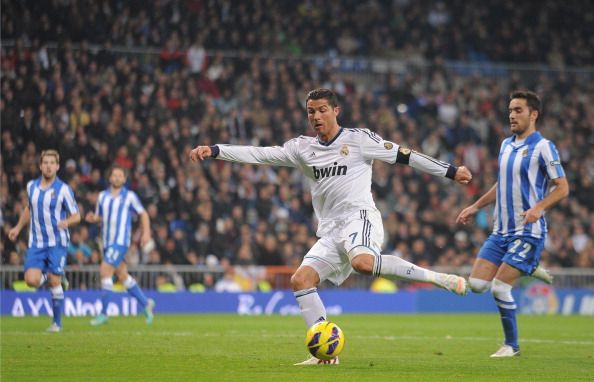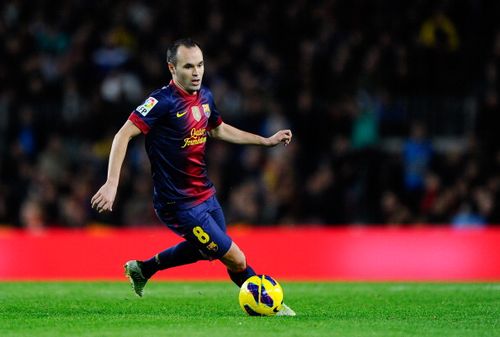
Talking Tactics – The Evolution of Wingplay

Cristiano Ronaldo started off as an out-and-out winger
Wingers have played an important role in football for decades. Starting from Stan Matthews’ heroics against Bolton in the FA Cup final, and George Best tearing down Benfica in the European Cup to Ryan Giggs’ amazing solo effort against Arsenal at Villa Park, and Gareth Bale tormenting Maicon; wingers have been the players that raise the roof of the stadium and get fans out of their seats.
The world’s most expensive player, Cristiano Ronaldo, is a winger (although a complete fluid forward would be a better way to describe him). Lionel Messi, the best player in the world, although currently a false nine, started his Barcelona career on the wing.
But what exactly is the role of a modern day winger? What are the various types of wingers? How do managers tweak the role of their wide men with modern day tactics emphasizing more on the 4-2-3-1 and the 4-3-3?
1) Conventional Wingers
Conventional wingers can be described perfectly with two words – pace and skill. There is only one thing in their minds – get the ball, beat the man, get to the by-line and whip in a cross for the forward to finish. Simple. They are used to stretch the opposition’s defense and operate generally in a 4-4-2, where the two central midfield players look to spread the play and the wingers are the chief play-makers for creating chances for the strikers. The full backs also play an important role by making overlapping runs on the outside in order to make life difficult for the opposition.
Examples of modern day Conventional Wingers are Gareth Bale, Antonio Valencia and Aaron Lennon.
2: Inverted Wingers
Over the years, goal scoring has become important artillery in the arsenal of wingers. As two-footed players are a rare breed, wingers generally switch flanks i.e. left-footed players playing on the right wing or vice versa. They start out wide and then cut inside onto their favoured foot to either cross or have a shot on goal. The fullbacks are the ones who generally provide the width. Inverted wingers generally operate in a 4-2-3-1 formation and are very efficient during counter attacks.
Examples of modern day Inverted Wingers are Arjen Robben, Frank Ribery and Angel Di Maria.
3: False Wingers

Andres Iniesta is the perfect example of a false winger
Tactics and tinkering has resulted in the theory of “False Wingers”. Unlike conventional wingers, the only time they hug the touchline is when their names are put out on the team-sheet. They are a breed between wide men and trequartistas. They have an incredible passing range and love to roam infield and play some intricate passes with the other midfielders and forwards, to ultimately release a player on the run with a through ball.
With possession being the name of the game in modern day football, teams tend to play with False Wingers who roam around in the space between the opposition’s midfield and defence in the inside left/right channel which makes it difficult for them to be marked out of the game.
Examples of modern day False Wingers are – David Silva, Andreas Iniesta and Shinji Kagawa.
4: Tactical Wingers
Tactical Wingers or Workhorses as some may call them are used by managers to provide extra cover to their full back. They are generally used tactically in big games to counter the threat of the opposition winger. They have boundless energy and stamina and cover a huge amount of ground. They ensure that the team retains its defensive shape once it loses the ball.
Examples of Tactical Wingers – Ji Sung Park, James Milner and Dirk Kuyt.
5: Others (Versatile Forwards and Target Men)
Versatile forwards such as Rooney and Ronaldo deserve special mention, as they can play anywhere in the front three. They are very difficult to mark as they switch positions and fit into the Cryuff way of “Total Football”.
The term “Target Man” is used with respect to forwards in general, but in some cases, managers play a tall physical front man out wide in order to take advantage of the lack of height in an opposition fullback. Bolton playing Kevin Davis out wide or Chelsea playing Nicolas Anelka out wide certainly come to mind.